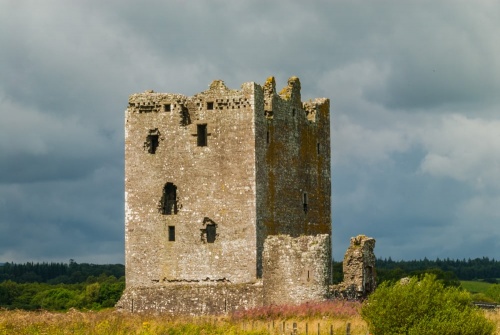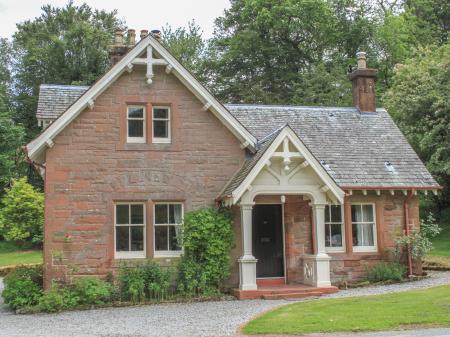
The island base was for many years the home and power base for the Black Douglases. It seems very likely that there were other defences here previously, as the island was used by the Lords of Galloway as a base since at least the 11th century. If the Lords had a fortress here, as seems likely, no trace of it has yet been found.
Archibald the Grim
Archibald was the illegitimate son of James of Douglas, dubbed 'Good Sir James'. Douglas was an aide and close friend of Robert the Bruce during the Scottish Wars of Independence, and Bruce's son, David II, granted Archibald the Lordship of Galloway and relied on him to both pacify the natives of Galloway and drive out the English. In both these tasks he succeeded, and in the process earned his moniker, awarded by the English for his fearsome appearance in battle.
The castle can only be accessed by boat, which must have been part of the appeal for Archibald when he decided to build here in 1369. The Black Douglases grew powerful over their years at Threave; too powerful for the likes of James II, and in 1455 the king besieged Threave. It took two months before the defenders finally surrendered, not due to any great military strategy by the king's men, but because James bribed them to give up. From that point, Threave became a crown property.
At the core of the castle defences is the tower house; a defensible keep. Archibald's tower stood 5 storeys and almost 100 feet high, with walls 10 feet thick. It was originally surrounded by a complex of other buildings, including a great hall, but most of these buildings have ben destroyed, leaving only the imposing central tower house. When the 8th Earl was faced with the prospect of a siege by James II he pulled down the ancillary buildings surrounding the tower and enclosed the site within a stone wall, built to withstand an artillery attack.
This was one of the first such defences in Scotland and was many years ahead of its time in its approach to making a fortress secure against this new form of warfare. Outside the wall, there was a water-filled ditch to add an extra layer of defence.
Threave Castle can only be reached by boat from the shore, and then only in calm weather. The boat is operated by Historic Scotland staff, and any disruptions in service are signposted at the visitor centre, a lengthy but pleasant walk from the riverside.



 We've 'tagged' this attraction information to help you find related historic attractions and learn more about major time periods mentioned.
We've 'tagged' this attraction information to help you find related historic attractions and learn more about major time periods mentioned.


